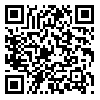

Volume 23, Issue 1 (3-2026)
RBS 2026, 23(1): 21-31 |
Back to browse issues page
Download citation:
BibTeX | RIS | EndNote | Medlars | ProCite | Reference Manager | RefWorks
Send citation to:



BibTeX | RIS | EndNote | Medlars | ProCite | Reference Manager | RefWorks
Send citation to:
Mansoori N, Bolghan-Abadi M. Narrative Review of Social Anxiety Disorder. RBS 2026; 23 (1) :21-31
URL: http://rbs.mui.ac.ir/article-1-1903-en.html
URL: http://rbs.mui.ac.ir/article-1-1903-en.html
1- M.A. in Clinical Psychology, Department of Psychology, Neyshabur Branch, Islamic Azad University, Neyshabur, Iran.
2- Assistant Professor, Department of Psychology, Neyshabur Branch, Islamic Azad University, Neyshabur, Iran. ,mbolghan@gmail.com
2- Assistant Professor, Department of Psychology, Neyshabur Branch, Islamic Azad University, Neyshabur, Iran. ,
Abstract: (258 Views)
Aim and Background: Social anxiety is one of the most common psychological disorders, especially among students. This disorder, which is related to the fear of negative evaluation by others, can have negative effects on social relationships, academic performance, and mental health. The aim of this study is to examine the dimensions of social anxiety, its prevalence, the factors influencing its occurrence, and the assessment methods used in students.
Methods and Materials: This study was conducted as a review of previous research on social anxiety. Various scales, such as the Fear of Negative Evaluation (FNE) scale and the Social Distress and Avoidance scale, were used to analyze data. These scales were employed to assess the symptoms and severity of social anxiety in individuals affected by the disorder.
Findings: Studies show that the prevalence of social anxiety in students ranges from 7% to 33%. Various factors, including genetics, environmental factors, coping styles, and substance use, play a role in the onset and exacerbation of this disorder. Additionally, social anxiety is a multidimensional construct that includes fear of negative evaluation, avoidance of social situations, and fear of positive evaluation. Research indicates that social anxiety is more prevalent in women and younger individuals.
Conclusions: Social anxiety is a common and complex disorder that negatively impacts the mental health and quality of life of students. Cognitive-behavioral and pharmacological treatments can help reduce the symptoms of this disorder. Accurate and timely assessment of social anxiety can improve the quality of life and academic performance of those affected by this disorder
Methods and Materials: This study was conducted as a review of previous research on social anxiety. Various scales, such as the Fear of Negative Evaluation (FNE) scale and the Social Distress and Avoidance scale, were used to analyze data. These scales were employed to assess the symptoms and severity of social anxiety in individuals affected by the disorder.
Findings: Studies show that the prevalence of social anxiety in students ranges from 7% to 33%. Various factors, including genetics, environmental factors, coping styles, and substance use, play a role in the onset and exacerbation of this disorder. Additionally, social anxiety is a multidimensional construct that includes fear of negative evaluation, avoidance of social situations, and fear of positive evaluation. Research indicates that social anxiety is more prevalent in women and younger individuals.
Conclusions: Social anxiety is a common and complex disorder that negatively impacts the mental health and quality of life of students. Cognitive-behavioral and pharmacological treatments can help reduce the symptoms of this disorder. Accurate and timely assessment of social anxiety can improve the quality of life and academic performance of those affected by this disorder
Type of Study: case report |
Subject:
Special
Received: 2025/01/7 | Accepted: 2025/02/28 | Published: 2025/03/22
Received: 2025/01/7 | Accepted: 2025/02/28 | Published: 2025/03/22
Send email to the article author
| Rights and permissions | |
 |
This work is licensed under a Creative Commons Attribution-NonCommercial 4.0 International License. |



